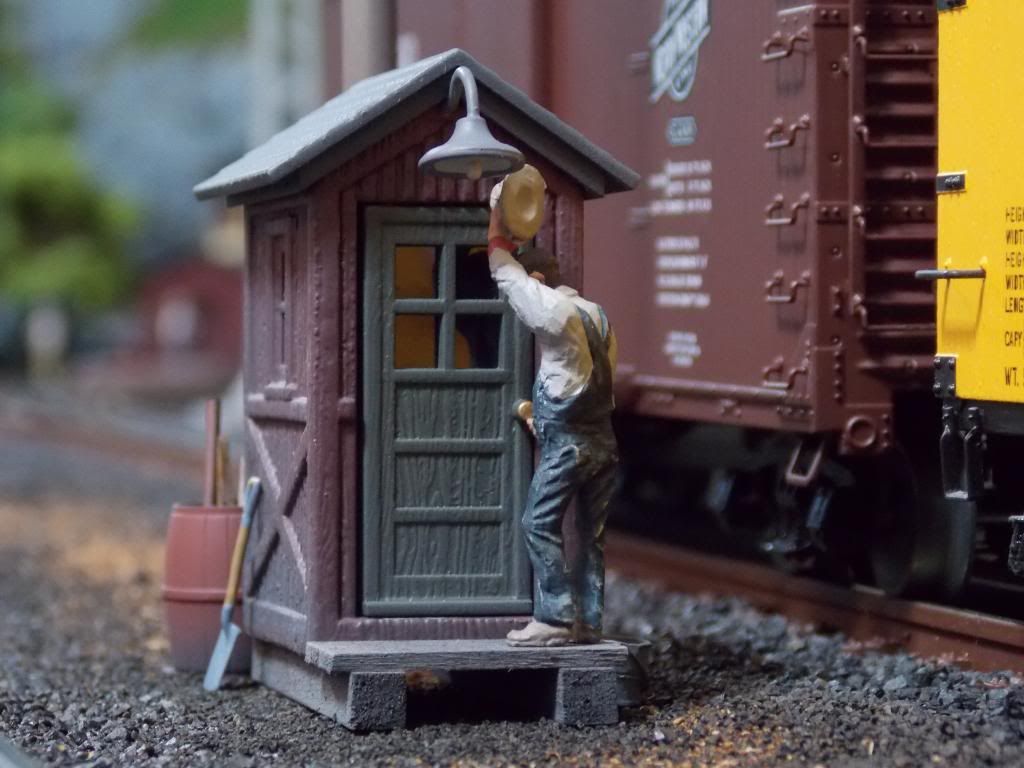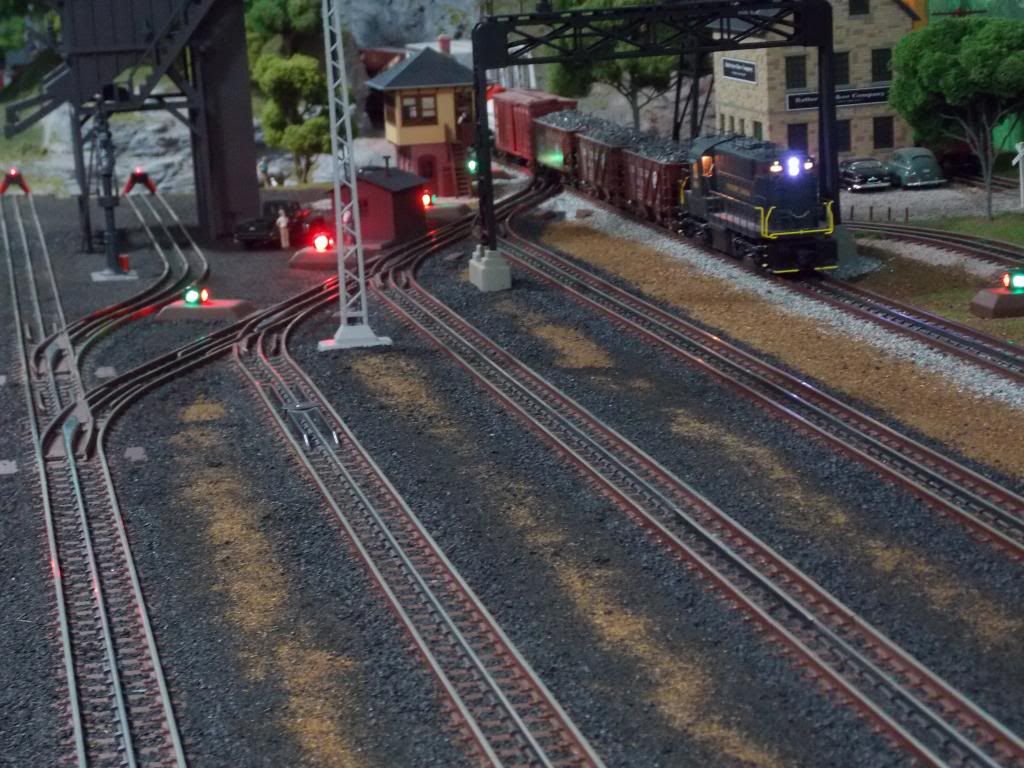I'm putting together all of the stuff for a small yard and locomotive service area (steam and early diesel) and would like some suggestions on ballasting it. I mainly model the SP. I know that different regions and different railroads used different types of ballast. I also know that ballast may be different in a yard area than it would be on a stretch of main line that is going thru a rural area. Would ballast maybe be darker in a yard area from all of the coal and oil? Would the roadbed be lower in a yard and service area? Any suggestions are welcome. Matt
Replies sorted oldest to newest
ED
YES GO DARKER. I HAVE USED GRAY ROOFING GRANULES FOR MAINLINE BUT DO MIX IN LOTS OF BLACK GRANULES FOR YARDS. YOU CAN EVEN SPRY ON SOME THINNED OUT INDIA INK TO DARKEN IT LOOK FOR ANY POSTINGS BY "SIRT" HE ALWAYS SHOWS PHOTOS IN A YARD AREA THATS WELL WEATHERED
HAVE FUN
I used the darker sooty,greasy ballast and overlayed 3/16" foamcore board[glued] to raise the "ground" up to tie top level. Haven't done dirty Yard groundscape among the tracks yet[real dirt,cinders].
Attachments
Matt, your layout looks great, just like South San Francisco. ![]()
I use a gray "O" gauge gravel and sprinkle some "HO" size black gravel over it. Works well to give it a yard look. Don
Hey Dewey....that is a great idea!!
Alan
I've looked at a variety photos of late steam era yards and I think a combination of dirt and with a heavy dose cinders creates a pretty good representation. Some of those steam era yards and everything around them seems to be just covered in black soot and cinders. Here are several photos of the small engine service facility and yard I am working on. They kind of give you an idea of what I have done. Bo ![]()



You can tell I think from the photos that I used a combination of fine, medium, and course ballast in the service and yard areas.
Here is an interesting group of pictures from NS Conway yard/ engine Service/ Turntable/facility. Note the oil absorbant material. The TT pit doubles as a waste/waste water collection area. Run-off is process through a treatment plant before exiting to the Ohio River. There is probably a pretty good reason why my work boot soles are listed as oil resistant.
Heavy duty
I used Black Beauty , which is used for sand blasting. I got a 100 lb bag for about 35 bucks.
What I did and am doing is using the BB and then dusting woodland scenic materials.
I model the Northeast PA, Anthracite region, so this is pretty common
Attachments
Thanks for all the great ideas! Matt
I've looked at a variety photos of late steam era yards and I think a combination of dirt and with a heavy dose cinders creates a pretty good representation. Some of those steam era yards and everything around them seems to be just covered in black soot and cinders. Here are several photos of the small engine service facility and yard I am working on. They kind of give you an idea of what I have done. Bo ![]()



You can tell I think from the photos that I used a combination of fine, medium, and course ballast in the service and yard areas.
Railhead53,
That is an awesome yard. The other question I have is did you put any type of cork or flexxbed under your yard track? Matt
I've looked at a variety photos of late steam era yards and I think a combination of dirt and with a heavy dose cinders creates a pretty good representation. Some of those steam era yards and everything around them seems to be just covered in black soot and cinders. Here are several photos of the small engine service facility and yard I am working on. They kind of give you an idea of what I have done. Bo ![]()



You can tell I think from the photos that I used a combination of fine, medium, and course ballast in the service and yard areas.
Railhead53,
That is an awesome yard. The other question I have is did you put any type of cork or flexxbed under your yard track? Matt
Matt,
Thanks for the kind remark about the yard. No, I'm using MTH Realtrax which comes with it's own plastic roadbed. In my case I layed the track directly on homasote and then applied strips of hardboard between the tracks to bring the ground up to about the height of the ties. It was kind of a chore, but it turned out ok I thought.
If I were using something like Atlas or Gargraves track you have the option of course to lay it directly on a surface such as homasote or put down some kind of roadbed first, then the track. I think if I had those options I would have done the latter because it would let me make subtle changes in the terrain between the tracks. The down side to that option is that it will require you to place more material between the tracks to get the ground level up to the top of the ties.
SIRT, another forum member, has done a beautiful job with his yard. You might pose your question to him as well.
I hope I have provided some assistance. Thanks again, Bo ![]()
I am using ScaleTrax. Matt








